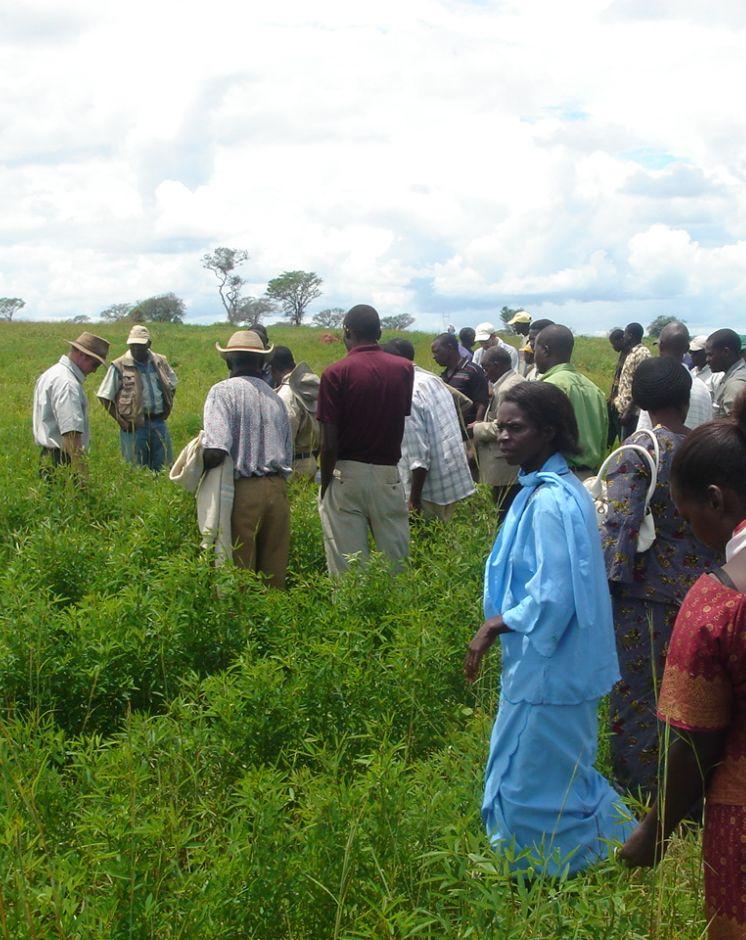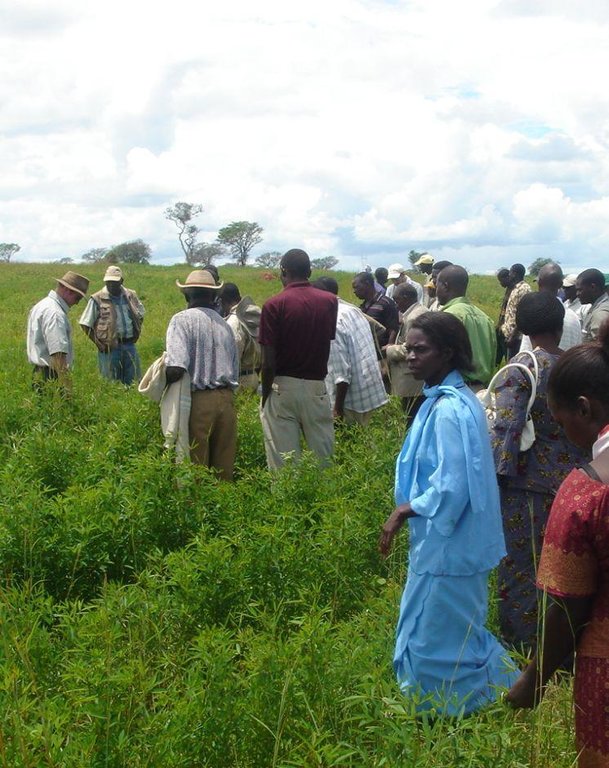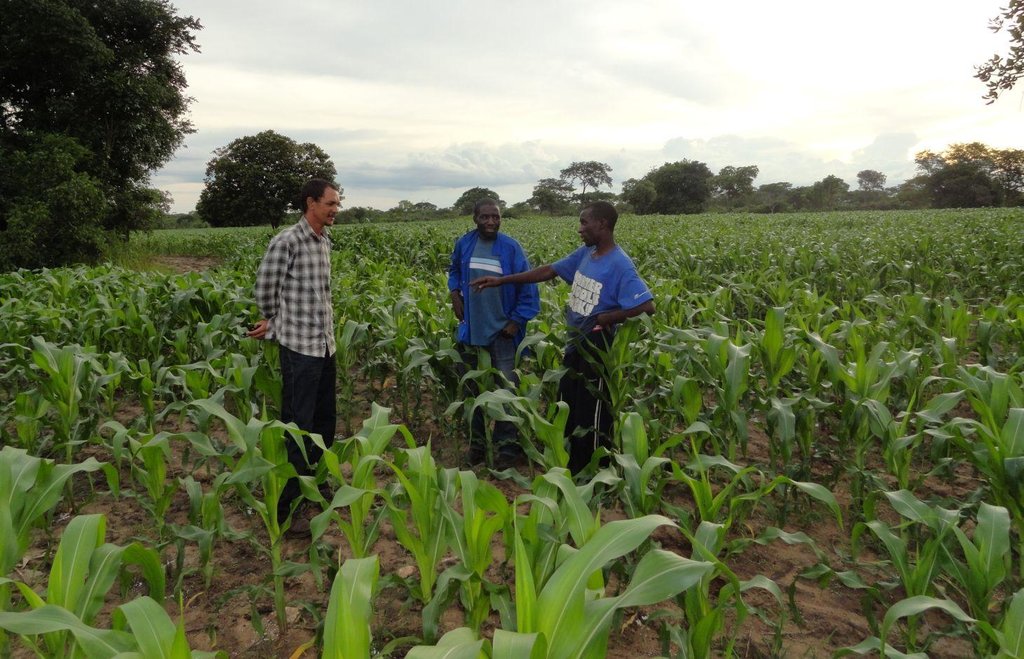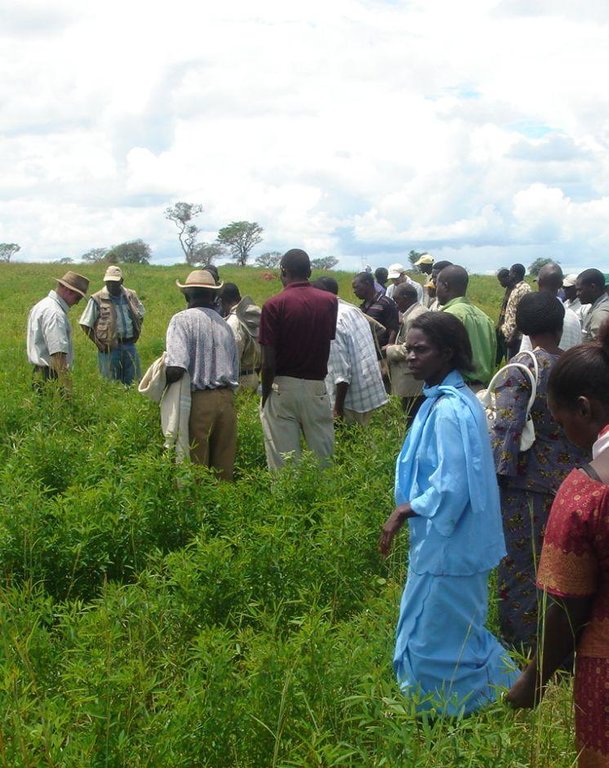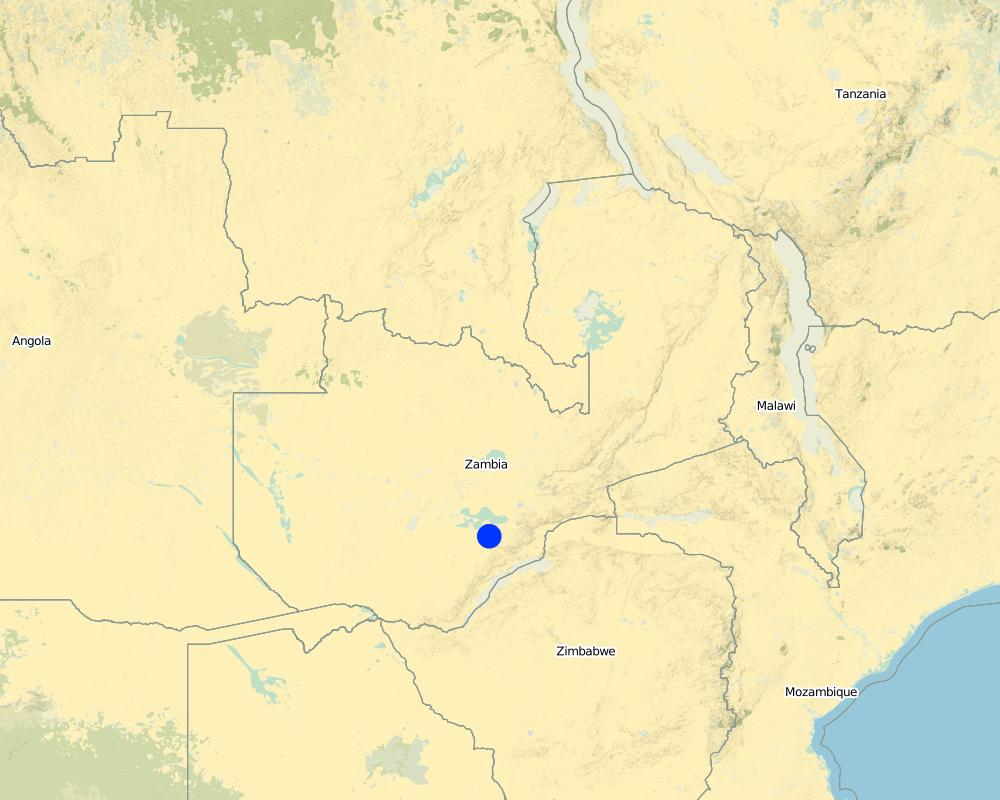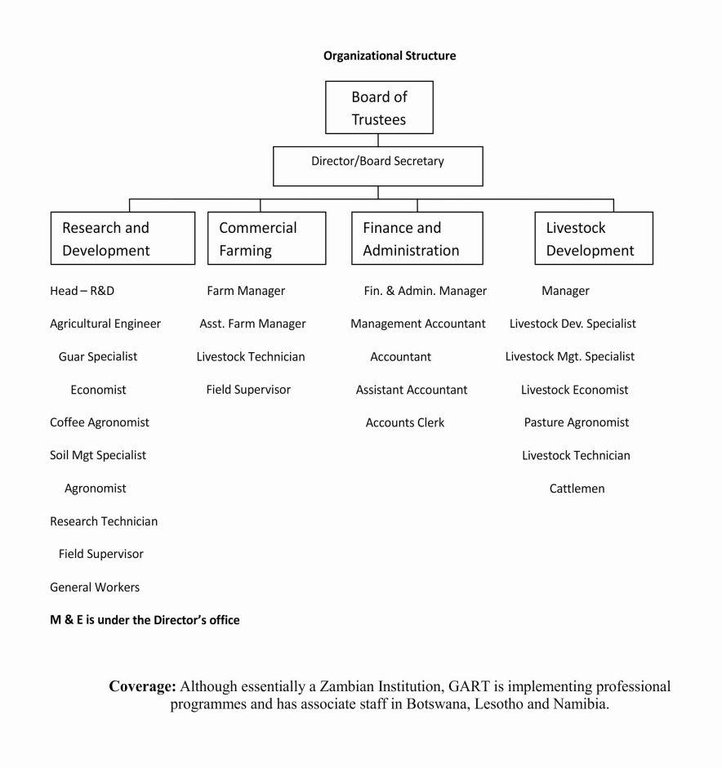Participatory Research and Development [Zambia]
- Creation:
- Update:
- Compiler: Arthur Chomba
- Editor: –
- Reviewer: Fabian Ottiger
on-farm research
approaches_2464 - Zambia
View sections
Expand all Collapse all1. General information
1.2 Contact details of resource persons and institutions involved in the assessment and documentation of the Approach
SLM specialist:
Ndandula Sharon
Gart
Zambia
SLM specialist:
Katoweji Alfred
GART
Zambia
SLM specialist:
Chingulu Sylvester
Ministry of Agriculture
Zambia
SLM specialist:
Wamunyima Silenga
+260 97 7490657
wamzysilenga@rocketmail.com
GART
Zambia
Name of the institution(s) which facilitated the documentation/ evaluation of the Approach (if relevant)
Golden Valley agricultural research trust (Golden Valley agricultural research trust) - ZambiaName of the institution(s) which facilitated the documentation/ evaluation of the Approach (if relevant)
Ministry of Agriculture of Zambia (MoA) - Zambia1.3 Conditions regarding the use of data documented through WOCAT
When were the data compiled (in the field)?
16/01/2013
The compiler and key resource person(s) accept the conditions regarding the use of data documented through WOCAT:
Yes
1.4 Reference(s) to Questionnaire(s) on SLM Technologies

Animal Draft Zero-Tillage [Zambia]
Animal draft zero-till involves the use of an animal drawn mechanical planter to plant directly in untilled soil to minimize soil disturbance and leave a cover of crop residues to conserve the soil and water.
- Compiler: Silenga Wamunyima

Strip Tillage Conservation Farming [Zambia]
Strip Tillage Conservation Farming is an animal draft reduced tillage method that involves loosening a strip of soil with a strip tillage tool so as to reduce soil disturbance and improve soil and water conservation.
- Compiler: Silenga Wamunyima
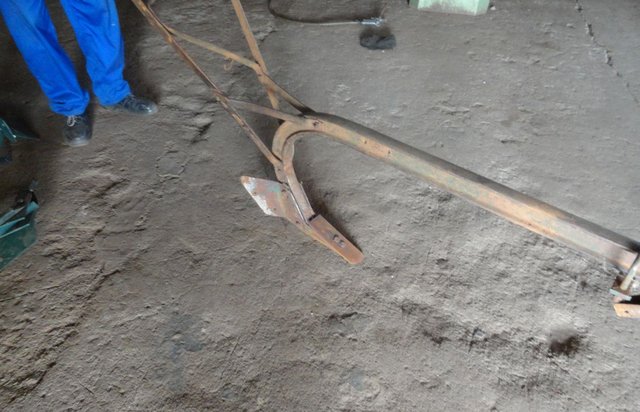
Conservation Tillage with Magoye Ripper [Zambia]
Conservation Tillage with the Magoye Ripper is an animal draft reduced tillage method that involves the use of the Magoye Ripper to loosen the soil by shattering with a tine instead of ploughing.
- Compiler: Silenga Wamunyima
2. Description of the SLM Approach
2.1 Short description of the Approach
This is a collaborative process between researchers and farmers for developing and adapting new technologies that focus on incorporating the perspectives and inputs from the farmers into the development process.
2.2 Detailed description of the Approach
Detailed description of the Approach:
Aims / objectives: (1)To stimulate active farmer participation in the technology development process so that local conditions and perspectives are integrated in the process. (2)Build the capacity of farmers to identify problems and contribute to selecting/improving technology options. (3) Raise farmers’ yields in a sustainable manner and ultimately contribute to increased net farm income.
Methods: A series of on-farm experiments are set up to test a range of technology options. These trials are implemented by the farmers so that vital feedback on which technology works and why it does so is collected. Suggestions for improvements are also collected, reviewed and incorporated into new designs or all together new technologies developed. The process is repeated until spontaneous adoption is evident before the technologies are promoted widely.
Stages of implementation: (1) Preparation of trial protocols for technologies to be tested (2) Identification of farmers and mobilization into farmer groups (3) Capacity building and increasing the knowledge base of farmers to effectively participate and contribute to development process. (4) Setting up of on-farm trials (5) Monitoring trials and collecting data/feedback from farmers (6) incorporation of feedback into technology development process and conducting on-station trials (7) technologies adapted or developed and introduced and the process is repeated.
Role of stakeholders: The approach was designed by national specialists where ‘best-bet’ technologies were pre-selected for testing. The role of GART was that of research and training of trainers. The supervision of the farmers was carried out by government extension workers who were supervised by the researchers and GART field technicians. The farmers implemented the approach and the decision on which technology to adopt was made by them. The land users also participated in evaluating the technologies and made suggestions on possible improvements. The decision on how best to consolidate these suggestions and incorporate them into the technologies was made by the specialists in consultation with the land users.
2.3 Photos of the Approach
2.5 Country/ region/ locations where the Approach has been applied
Country:
Zambia
Region/ State/ Province:
Zambia
Further specification of location:
Mazabuka/Magoye
Map
×2.6 Dates of initiation and termination of the Approach
Indicate year of initiation:
1995
2.7 Type of Approach
- project/ programme based
2.8 Main aims/ objectives of the Approach
The Approach focused mainly on SLM with other activities (Increasing agricultural productivity, improving livelihoods )
(1)To stimulate active farmer participation in the technology development process so that local conditions and perspectives are integrated in the process. (2)Build the capacity of farmers to identify problems and contribute to selecting/improving technology options. (3) Raise farmers’ yields in a sustainable manner through technology innovation and ultimately contribute to increased net farm income.
The SLM Approach addressed the following problems: Unsustainable farming practices leading to environmental degradation and low agricultural productivity
2.9 Conditions enabling or hindering implementation of the Technology/ Technologies applied under the Approach
social/ cultural/ religious norms and values
- hindering
The participation of women not as much as that of men
Treatment through the SLM Approach: Women headed households were identified and targeting for inclusion in the project
availability/ access to financial resources and services
- hindering
The short cycle of projects and funding that made long-term planning difficult
Treatment through the SLM Approach: Collaborate with government structures and extension service to ensure sustainability of the project
institutional setting
- hindering
Weak collaboration between organizations promoting conservation agriculture (CA) leading to mixed messages being delivered to farmers
Treatment through the SLM Approach: Formation of the Conservation Farming Association (CAA) to synchronise messages and avoid duplication of efforts
legal framework (land tenure, land and water use rights)
- hindering
Lack of secure land tenure leading to hesitancy to invest in long-term conservation efforts
Treatment through the SLM Approach: Emphasise the short-term benefits of conservation
The existing land ownership, land use rights / water rights moderately hindered the approach implementation Lack of secure land tenure discourages land user from seeking long-term conservation efforts
knowledge about SLM, access to technical support
- hindering
The failure of rural workshops to produce and supply the necessary equipment for the implementation of the approach
Treatment through the SLM Approach: Collaboration was initiated with mainstream equipment suppliers
other
- hindering
Low returns from the sale of the staple crop (maize) and hence low returns to farming general
Treatment through the SLM Approach: Encourage crop livestock integration and promote crop diversification
3. Participation and roles of stakeholders involved
3.1 Stakeholders involved in the Approach and their roles
- local land users/ local communities
Community based organizations for HIV/AIDS affected people
Most of the households are male headed. of the 250 farmers registered in Magoye, only 22 were female headed.
- SLM specialists/ agricultural advisers
Researchers and government extension
- researchers
Researchers and government extension
- national government (planners, decision-makers)
Government extension implemented the approach after training from GART. Politicians were lobbied to mainstream CA in govt programmes
GART, the main implementing body is a quasi-government body
3.2 Involvement of local land users/ local communities in the different phases of the Approach
| Involvement of local land users/ local communities | Specify who was involved and describe activities | |
|---|---|---|
| initiation/ motivation | interactive | Approach inititated by specialists based on interactions with land-users from previous programmes |
| planning | passive | Planning was done by specialists although farmers were informed and consulted at every stage |
| implementation | interactive | Land users implemented the approach with the help of specialists |
| monitoring/ evaluation | passive | Monitoring/evaluation was done by the specialists together with the land users as well as external evaluators |
| Research | interactive | Research was done by the specialists together with the land users |
3.3 Flow chart (if available)
Description:
Golden Valley Agricultural Research Trust (GART) is an autonomous and self-sustaining
Public Private Partnership organization in 1993 created by the Government of Zambia and the Zambia National Farmers Union GART is member of the Zambia National Farmers Union (ZNFU).
Author:
Silenga Wamunyima (Mazabuka/Southern Province/Zambia)
3.4 Decision-making on the selection of SLM Technology/ Technologies
Specify who decided on the selection of the Technology/ Technologies to be implemented:
- mainly land users, supported by SLM specialists
Explain:
The choice of which technology to test was made by the specialist but the choice of which technology to implement was made by the land users
Decisions on the method of implementing the SLM Technology were made by mainly by land users supported by SLM specialists
4. Technical support, capacity building, and knowledge management
4.1 Capacity building/ training
Was training provided to land users/ other stakeholders?
Yes
Specify who was trained:
- land users
- field staff/ advisers
Form of training:
- farmer-to-farmer
- demonstration areas
- public meetings
Subjects covered:
soil conservation and soil fertility improvement, how to use the conservation agricultural technologies, crop-livestock integration
4.2 Advisory service
Do land users have access to an advisory service?
Yes
Specify whether advisory service is provided:
- on land users' fields
Describe/ comments:
Name of method used for advisory service: Training of Trainers; Key elements: trainig of goverment extension workers and NGOs promoting of conservation agriculture (CA), on-farm demonstrations, field days
Advisory service is inadequate to ensure the continuation of land conservation activities; There are too few extension workers and there aren’t sufficient training manuals
4.3 Institution strengthening (organizational development)
Have institutions been established or strengthened through the Approach?
- yes, moderately
Specify the level(s) at which institutions have been strengthened or established:
- local
Specify type of support:
- capacity building/ training
- equipment
Give further details:
Capacity building of local cooperatives and farmer associations, training of trainers and practical demonstrations
4.4 Monitoring and evaluation
Is monitoring and evaluation part of the Approach?
Yes
Comments:
bio-physical aspects were regular monitored by project staff, land users through observations; indicators: Soil properties, moisture conservation
bio-physical aspects were ad hoc monitored by project staff through measurements; indicators: soil miosture, soil fertility
technical aspects were regular monitored by project staff through observations; indicators: Yield, production area, labour, timeliness
technical aspects were None monitored by project staff through measurements; indicators: equipment breakdowns
socio-cultural aspects were None monitored by project staff through observations; indicators: Gender, mindset, status
economic / production aspects were None monitored through observations; indicators: Yields, labour inputs, costs, income, adoption
no. of land users involved aspects were monitored through observations
There were several changes in the Approach as a result of monitoring and evaluation: There was more emphasis on on-farm trials as the project went on with more training on weeding techniques and crop-livestock integration
There were several changes in the Technology as a result of monitoring and evaluation: The Magoye Ripper (T_ZAM003en) was modified to penetrate deeper and an altogether new technology called the Magoye Planter (Strip Tillage T_ZAM002en) was developed to overcome some of the constraints of the Magoye Ripper.
4.5 Research
Was research part of the Approach?
Yes
Specify topics:
- technology
Give further details and indicate who did the research:
Research by GART focused on equipment development and adaptation of soil improvement technologies to make Conservation Agriculture (CA) a viable option for animal draft farmers
Research was carried out both on station and on-farm
5. Financing and external material support
5.1 Annual budget for the SLM component of the Approach
If precise annual budget is not known, indicate range:
- 2,000-10,000
Comments (e.g. main sources of funding/ major donors):
Approach costs were met by the following donors: local community / land user(s) (Land preparation by land user(s)): 100.0%
5.2 Financial/ material support provided to land users
Did land users receive financial/ material support for implementing the Technology/ Technologies?
Yes
If yes, specify type(s) of support, conditions, and provider(s):
Mostly contributions from EU supplemented by finances from commercial activities i.e. commercial crop production and contract research
5.3 Subsidies for specific inputs (including labour)
- equipment
| Specify which inputs were subsidised | To which extent | Specify subsidies |
|---|---|---|
| tools | partly financed | |
If labour by land users was a substantial input, was it:
- voluntary
Comments:
GART only provided technical support while the farmer provided all the inputs, labour
5.4 Credit
Was credit provided under the Approach for SLM activities?
No
6. Impact analysis and concluding statements
6.1 Impacts of the Approach
Did the Approach help land users to implement and maintain SLM Technologies?
- No
- Yes, little
- Yes, moderately
- Yes, greatly
The farmers that adopted the Magoye Ripper were ploughing (pulverising) less thereby reducing erosion and loss of organic matter. However, some of the technologies have not been adopted on a wide enough scale to create an impact at community level. Even the farmers that did not adopt the technologies are now more aware of the need for soil conservation.
Did the Approach empower socially and economically disadvantaged groups?
- No
- Yes, little
- Yes, moderately
- Yes, greatly
HIV/AIDS affected families and female headed households were specifically targeted
Did the Approach improve issues of land tenure/ user rights that hindered implementation of SLM Technologies?
- No
- Yes, little
- Yes, moderately
- Yes, greatly
Apart from lobbying policy makers, issues of land tenure were beyond the scope of the approach The problem is likely to be overcome in the near future. The problem has been acknowledged by politicians and addressed in the new draft constitution
Did other land users / projects adopt the Approach?
- No
- Yes, little
- Yes, moderately
- Yes, greatly
On-farm research has been adopted by the Conservation Farming Unit (CFU) who are the biggest player in promotion of Conservation Agriculture in Zambia. There are not many other research organizations in Zambia
Did the Approach lead to improved livelihoods / human well-being?
- No
- Yes, little
- Yes, moderately
- Yes, greatly
Increased income and improved food security, less labour constraints and more time for other economic activities
Did the Approach help to alleviate poverty?
- No
- Yes, little
- Yes, moderately
- Yes, greatly
Increased income and improved food security, less labour constraints and more time for other economic activities
6.2 Main motivation of land users to implement SLM
- increased production
- increased profit(ability), improved cost-benefit-ratio
- reduced workload
- environmental consciousness
6.3 Sustainability of Approach activities
Can the land users sustain what has been implemented through the Approach (without external support)?
- yes
If yes, describe how:
Adoption rates for Conservation Agriculture are still fairly low indicating that the practice is still fairly new and the technologies still need to be adapted and refined to suit local conditions. The farmers still need technical support until the bottlenecks with the practices are addressed and there is evident spontaneous adoption. This all depends on how well research and planners respond to the current challenges.
6.4 Strengths/ advantages of the Approach
| Strengths/ advantages/ opportunities in the land user’s view |
|---|
| Farmers well informed of current developments and technology advancements (How to sustain/ enhance this strength: Training farmers on current developments and technology advancements) |
| Strengths/ advantages/ opportunities in the compiler’s or other key resource person’s view |
|---|
| Farmers organizations strengthened (How to sustain/ enhance this strength: Capacity building) |
|
There is strong farmer involvement in technology adaptation (How to sustain/ enhance this strength: Increase the farmers knowledge base to ensure effective participation) |
6.5 Weaknesses/ disadvantages of the Approach and ways of overcoming them
| Weaknesses/ disadvantages/ risks in the compiler’s or other key resource person’s view | How can they be overcome? |
|---|---|
| Too little emphasis on knowledge transfer and too much on practical demonstrations and ‘how-to’ training. |
Focus more on understanding principles and technology selection |
7. References and links
7.1 Methods/ sources of information
- field visits, field surveys
- interviews with land users
7.2 References to available publications
Title, author, year, ISBN:
Impact study on the acceptance of the Magoye Ripper, Piet Stevens, David Samazaka, Ab Wanders, Douglas Moono, 2002 Conservation farming in Zambia, Steven Haggblade, Gelson Tembo, October 2003 Social-economic analysis of conservation agriculture in southern Africa, FAO, 2011Conservation farming in Zambia, Conservation farming unit (CFU), 2011
Available from where? Costs?
GART/free onlineINDABA Project, Michigan State University/free onlineFAO/free onlinecfu@zamnet.zm
Title, author, year, ISBN:
Conservation farming in Zambia, Steven Haggblade, Gelson Tembo, October 2003
Available from where? Costs?
INDABA Project, Michigan State University/free online
Title, author, year, ISBN:
Social-economic analysis of conservation agriculture in southern Africa, FAO, 2011
Available from where? Costs?
FAO/free online
Title, author, year, ISBN:
Conservation farming in Zambia, Conservation farming unit (CFU), 2011
Available from where? Costs?
cfu@zamnet.zm
Links and modules
Expand all Collapse allLinks

Animal Draft Zero-Tillage [Zambia]
Animal draft zero-till involves the use of an animal drawn mechanical planter to plant directly in untilled soil to minimize soil disturbance and leave a cover of crop residues to conserve the soil and water.
- Compiler: Silenga Wamunyima

Strip Tillage Conservation Farming [Zambia]
Strip Tillage Conservation Farming is an animal draft reduced tillage method that involves loosening a strip of soil with a strip tillage tool so as to reduce soil disturbance and improve soil and water conservation.
- Compiler: Silenga Wamunyima

Conservation Tillage with Magoye Ripper [Zambia]
Conservation Tillage with the Magoye Ripper is an animal draft reduced tillage method that involves the use of the Magoye Ripper to loosen the soil by shattering with a tine instead of ploughing.
- Compiler: Silenga Wamunyima
Modules
No modules


